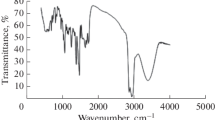Abstract
In the Liebermann–Burchard (LB) colorimetric assay, treatment of cholesterol with sulfuric acid, acetic anhydride, and acetic acid elicits a blue color. We studied the reactivity of cholesterol under LB conditions and provide definitive NMR characterization for approximately 20 products, whose structure and distribution suggest the following mechanistic picture. The major reaction pathways do not involve cholestadienes, i-steroids, or cholesterol dimers, as proposed previously. Instead, cholesterol and its acetate and sulfate derivatives undergo sulfonation at a variety of positions, often with skeletal rearrangements. Elimination of an SO3H group as H2SO3 generates a new double bond. Repetition of this desaturation process leads to polyenes and ultimately to aromatic steroids. Linearly conjugated polyene cations can appear blue but form too slowly to account for the LB color response, whose chemical origin remains unidentified. Nevertheless, the classical polyene cation model is not excluded for Salkowski conditions (sulfuric acid), which immediately generate considerable amounts of cholesta-3,5-diene. Some rearrangements of cholesterol in H2SO4 resemble the diagenesis pathways of sterols and may furnish useful lipid biomarkers for characterizing geological systems.







Similar content being viewed by others
Abbreviations
- ES:
-
Electrospray
- FAB:
-
Fast-atom bombardment
- HPLC:
-
High-performance liquid chromatography
- LB:
-
Liebermann–Burchard
- NBA:
-
3-Nitrobenzyl alcohol
- TLC:
-
Thin-layer chromatography
References
Bartos J, Pesez M (1976) Colorimetric and fluorimetric analysis of steroids. Academic, London
Zak B (1980) Cholesterol methodology for human studies. Lipids 15:698–704
Zak B (1977) Cholesterol methodologies: a review. Clin Chem 23:1201–1214
Tonks DB (1967) The estimation of cholesterol in serum: a classification and critical review of methods. Clin Biochem 1:12–29
USA Food and Drug Administration. http://www.fda.gov/cdrh/ode/605.html#toc_18. Accessed Oct 2006
Liebermann C (1885) Ueber das Oxychinoterpen. Chem Ber 18:1803–1809
Burchard H (1889) Beiträge zur Kenntnis des Cholesterins. Inaugural-Dissertation, Universität Rostock [Chem Zentralbl 61-I:25–27 (1890)]
Xiong Q, Ruan B, Whitby FG, Tuohy RP, Belanger TL, Kelley RI, Wilson WK, Schroepfer GJ Jr (2002) A colorimetric assay for 7-dehydrocholesterol with potential application to screening for Smith-Lemli-Opitz syndrome. Chem Phys Lipids 115:1–15
Brieskorn CH, Hofmann H (1964) Beitrag zum Chemismus der Farbreaction nach Liebermann–Burchard. Arch Pharm 297:577–588
Rosenheim O (1929) A specific colour reaction for ergosterol. Biochem J 23:47–53
Watanabe T (1959) The colored intermediates and products of cholesterol by Liebermann–Burchard reaction, and its reaction mechanism. Eisei Shikensho Hokoku 77:87–94 (Chem Abstr 55:54430)
Burke RW, Diamondstone BI, Velapoldi RA, Menis O (1974) Mechanisms of the Liebermann–Burchard and Zak color reactions for cholesterol. Clin Chem 20:794–801
Velapoldi RA, Diamondstone BI, Burke RW (1974) Spectral interpretation and kinetic studies of the Fe3+–H2SO4 (Zak) procedure for determination of cholesterol. Clin Chem 20:802–811
Zuman P (1991) A review of reactions of some sterols in strongly acidic media. Microchem J 43:10–34
Niiya T, Goto Y, Ono Y, Ueda Y (1980) Study on the correspondence of color change with polyeneyl cation formation of cholesterol in strong acids. Chem Pharm Bull 28:1747–1761
Abell LL, Levy BB, Brodie BB, Kendall FE (1952) Simplified method for the estimation of total cholesterol in serum and demonstration of its specificity. J Biol Chem 195:357–366
Frisch MJ, Trucks GW, Schlegel HB, Scuseria GE, Robb MA, Cheeseman JR, Montgomery JA Jr, Vreven T, Kudin KN, Burant JC et al (2004) Gaussian 03, revisions C.02 and D.01. Gaussian, Wallingford, CT, USA
Shan H, Segura MJR, Wilson WK, Lodeiro S, Matsuda SPT (2005) Enzymatic cycliation of dioxidosqualene to heterocyclic triterpenes. J Am Chem Soc 127:18008–18009
Salkowski E (1872) Kleinere Mittheilungen physiologisch-chemischen Inhalts (II). Archiv Gesammte Physiol Menschen Tiere 6:207–222
Salkowski E (1908) Physiologisch-chemische Notizen. Hoppe Seylers Z Physiol Chem 57:515–528
Peakman TM, Ellis K, Maxwell JR (1988) Acid-catalyzed rearrangements of steroid alkenes. Part. 2 a re-investigation of the backbone rearrangement of cholest-5-ene. J Chem Soc Perkin Trans 1:1071–1075
Scott AI (1964) Interpretation of the ultraviolet spectra of natural products. Pergamon, New York, p 392
Sorensen TS (1965) The preparation and reactions of a homologous series of aliphatic polyenylic cations. J Am Chem Soc 87:5075–5084
Deno NC, Pittman CU Jr, Turner JO (1965) Cyclizations of pentadienyl and heptatrienyl cations. J Am Chem Soc 87:2153–2157
Yoder L, Thomas BH (1954) An antirachitic sulfonic acid derivative of cholesterol. Arch Biochem Biophys 50:113–123
Studer J, Purdie N, Krouse JA (2003) Friedel-Crafts acylation as a quality control assay for steroids. Appl Spectrosc 57:791–796
Rushdi AI, Ritter G, Grimalt JO, Simoneit BRT (2003) Hydrous pyrolysis of cholesterol under various conditions. Org Geochem 34:799–812
Schüpfer PY, Gülacar FO (2000) Relative stabilities of cholestadienes calculated by molecular mechanics and semi-empirical methods: application to the acid-catalyzed rearrangement reactions of cholesta-3,5-diene. Org Geochem 31:1589–1596
Chen J, Summons RE (2001) Complex patterns of steroidal biomarkers in tertiary lacustrine sediments of the Biyang basin, China. Org Geochem 32:115–126
Acknowledgements
This work was supported in part by startup funding from Texas Southern University for Q.X. We thank Alemka Kisic for supplying purified cholesterol. Quantum-mechanical calculations were carried out in part on the Rice Terascale Cluster funded by the NSF (EIA-0216467), Intel, and Hewlett-Packard and on the Rice Cray XD1 Research Cluster funded by the NSF (CNS-0421109) in partnership with AMD and Cray.
Author information
Authors and Affiliations
Corresponding author
About this article
Cite this article
Xiong, Q., Wilson, W.K. & Pang, J. The Liebermann–Burchard Reaction: Sulfonation, Desaturation, and Rearrangment of Cholesterol in Acid. Lipids 42, 87–96 (2007). https://doi.org/10.1007/s11745-006-3013-5
Received:
Accepted:
Published:
Issue Date:
DOI: https://doi.org/10.1007/s11745-006-3013-5




